Daunting historical photos of Hiroshima
• Daunting historical photos of Hiroshima
August 6, 1945 the United States dropped an atomic bomb on the Japanese city of Hiroshima. Today we remember this tragedy, very much hope that nuclear weapons will never be applied, and when something finally and completely cease to exist.
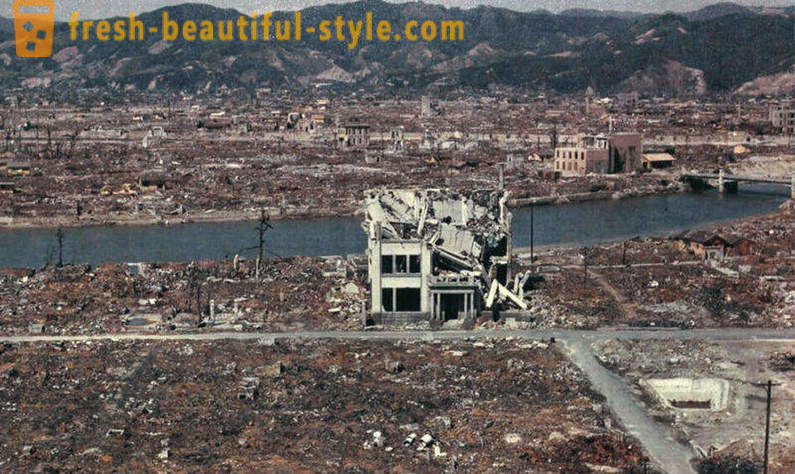
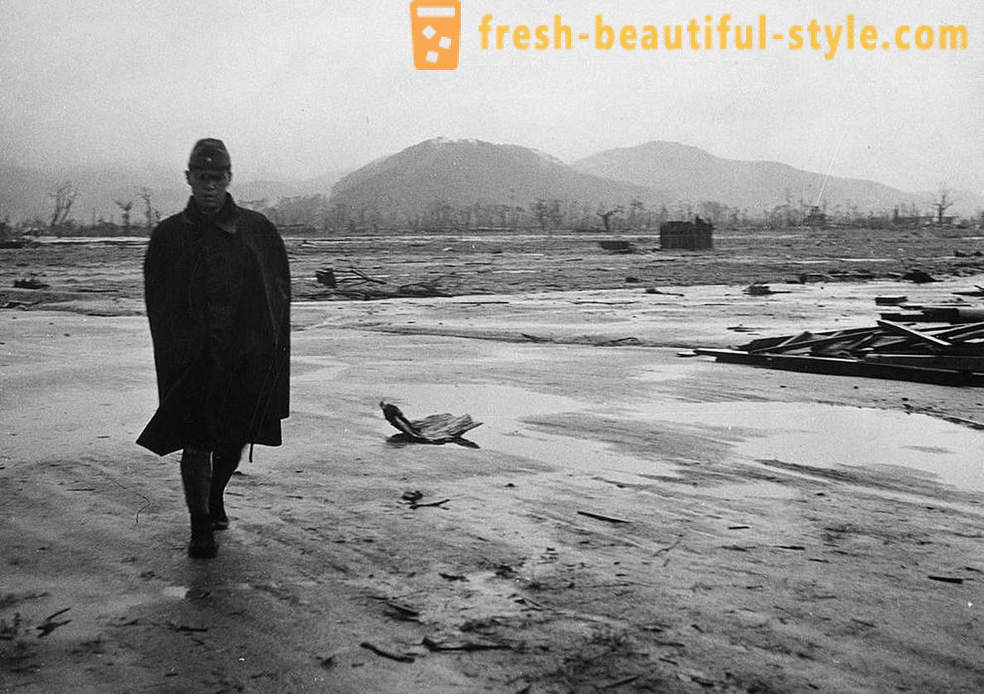
Japanese soldier walks along a deserted area in Hiroshima in September 1945, just a month after the bombing. This series of photographs depicting the suffering and ruins, was presented by the American navy. (U.S. Department of Navy)

on Hiroshima Aerial view shortly before the city bomb was dropped in August 1945. This shows the densely populated area of the city on the Motoyasu River. (Hiroshima: The United States Strategic Bombing Survey Archive, International Center of Photography, Purchase, with funds provided by the ICP Acquisitions Committee, 2006)
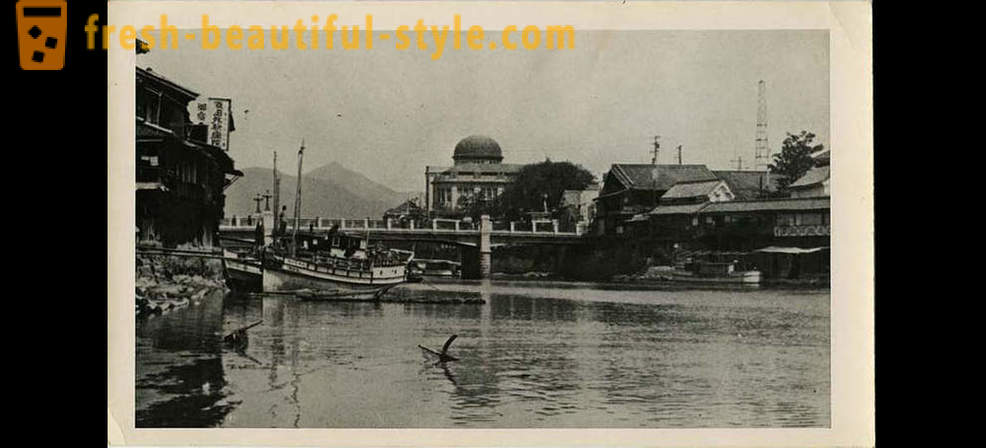
Photo of Hiroshima made before August 1945. Upstream Motoyasu River to the most famous place of Hiroshima - the dome of the exhibition center, located in the vicinity of the epicenter. Originally, this building designed by Czech architect Jan Lettsel, it was completed in April 1915. (Hiroshima: The United States Strategic Bombing Survey Archive, International Center of Photography, Purchase, with funds provided by the ICP Acquisitions Committee, 2006)

The data of the air forces of the USA - a map of Hiroshima prior to the bombing, in which one can observe the epicenter area, which instantly disappeared from the face of the earth. (U.S. National Archives and Records Administration)

The commander of the AF Birch (left) numbers the bomb codenamed "Little Boy" before loading it on a trailer in front of the Assembly building №1 final loading bombs on board the bomber B-29 Superfortress "Enola Gay" on the basis of 509th consolidated group on Tinian island in the Marianas in 1945. Physicist Dr. Ramsay (right) receive the Nobel Prize in Physics in 1989. (U.S. National Archives)
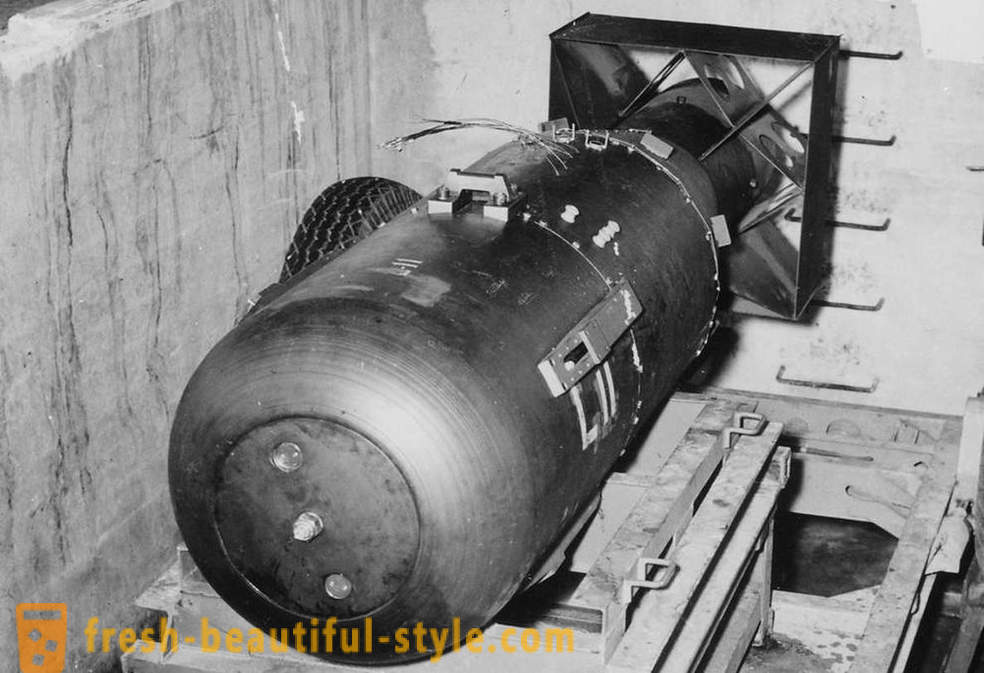
"Kid" rests on a trailer in a hole over the lock B-29 bomber Superfortress "Enola Gay" on the basis of 509th consolidated group on the Mariana Islands in 1945. "Baby" was 3 m in length and weighed 4000 kg, but contained a total of 64 kg of uranium that was used to provoke nuclear chain reactions and subsequent explosion. (U.S. National Archives)
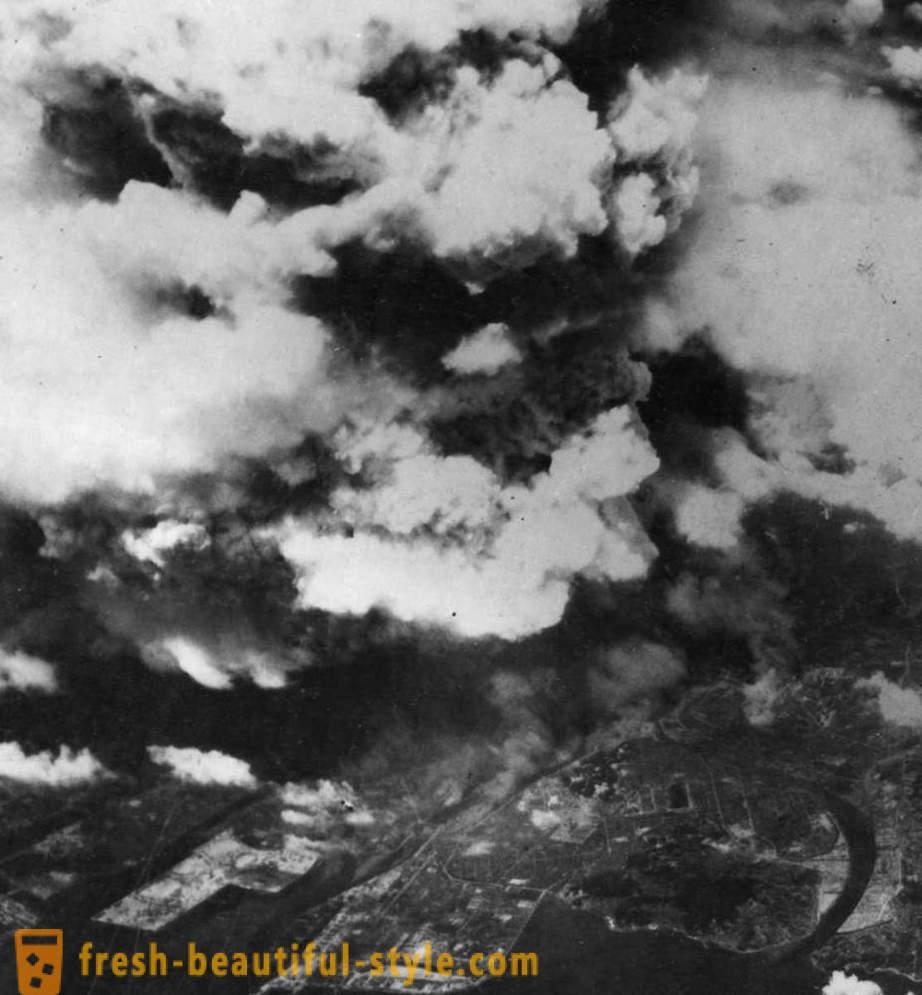
Photos taken from one of the two American bombers 509th consolidated group, shortly after 8:15, August 5, 1945, shows the rising smoke from the explosion over the city of Hiroshima. By the time the shooting had already occurred a flash of light and heat from the fireball with a diameter of 370 m, and the shock wave dissipates rapidly, is already causing major damage to buildings and people in a radius of 3, 2 kilometers. (U.S. National Archives)
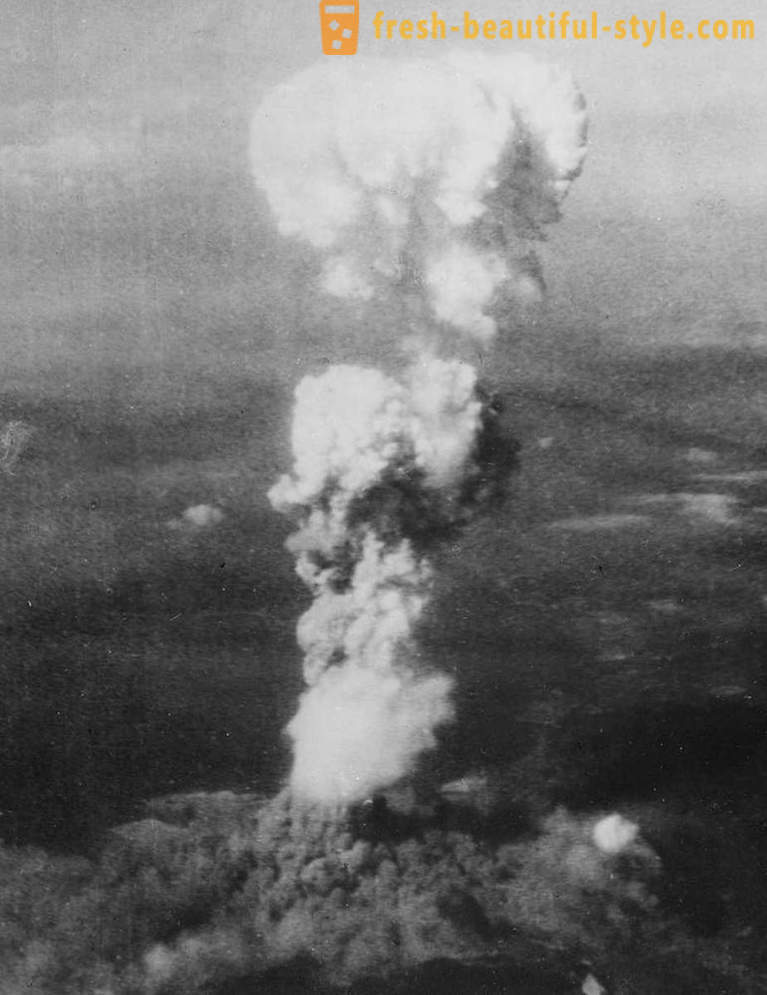
The growing nuclear "mushroom" over Hiroshima shortly after 8:15 on August 5, 1945. When the uranium portion in the bomb went splitting stage, she instantly became a power of 15 kilotons of TNT, heating a massive fireball to a temperature of 3980 degrees Celsius. The heated air to the limit rose quickly in the atmosphere, like a huge bubble, raising over a column of smoke. By the time this photo was taken, I was able to rise to a height of 6096 meters above Hiroshima, and the smoke from the explosion of the first atomic bomb shattered at 3048 m at the base of the column. (U.S. National Archives)

Type of destruction of Hiroshima in autumn 1945 at a branch of the river that passes through the delta, where the city. (Hiroshima: The United States Strategic Bombing Survey Archive, International Center of Photography, Purchase, with funds provided by the ICP Acquisitions Committee, 2006)
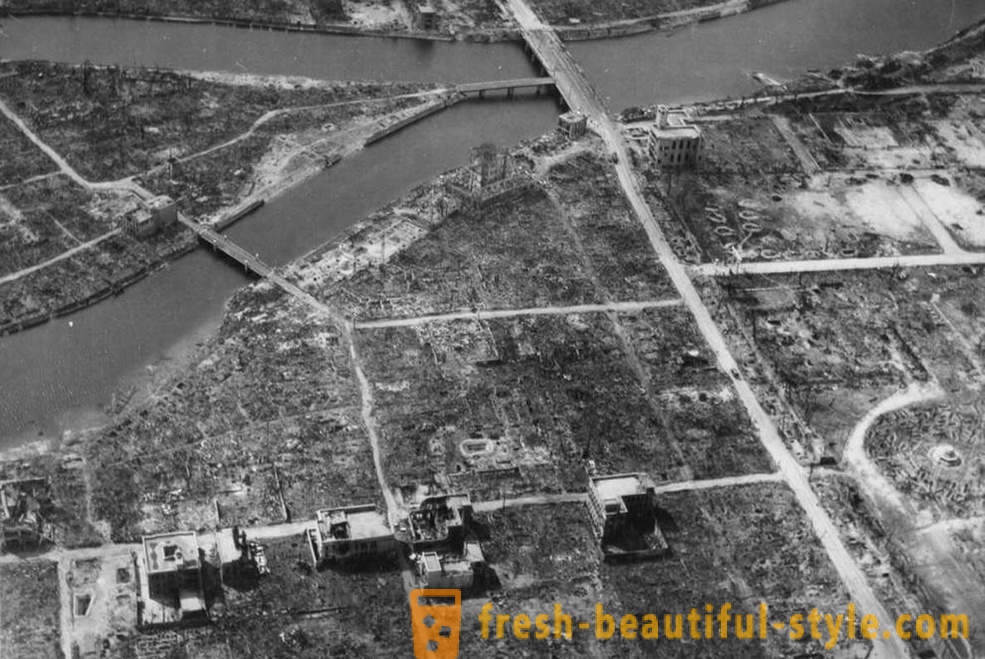
View the epicenter of Hiroshima in the autumn of 1945 - the complete destruction after the reset of the first atomic bomb. The photograph shows the hypocenter (the center point of the explosion hearth) - roughly on a Y-intersection in the center left. (U.S. National Archives)
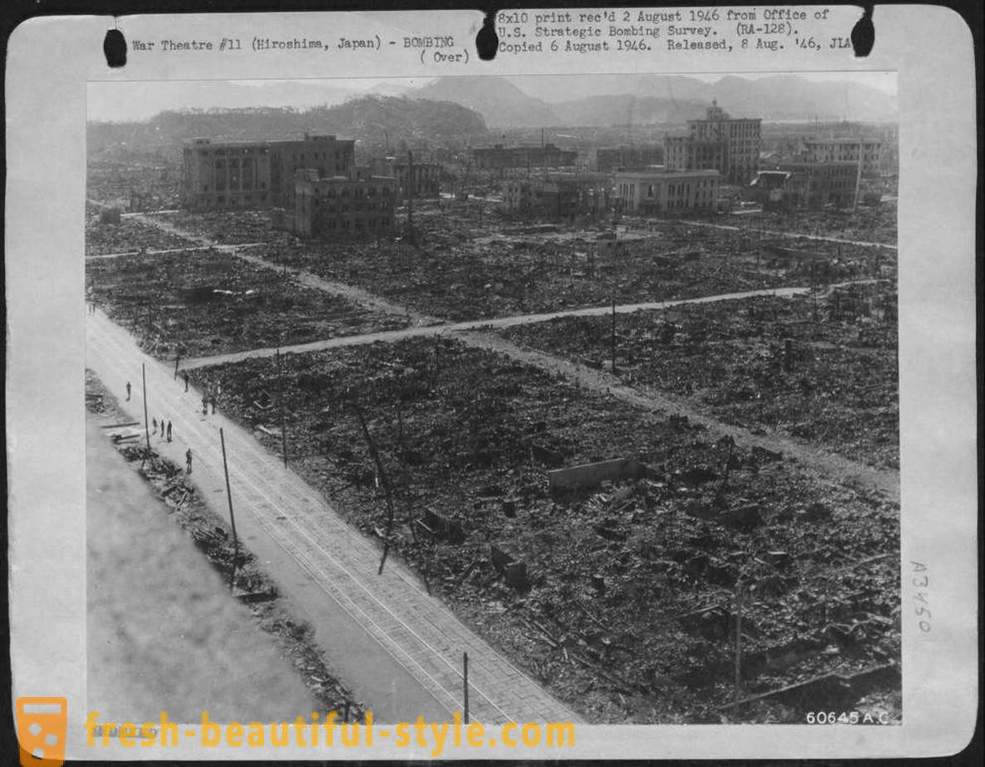
Part of a panoramic view of the destroyed Hiroshima made using five cameras from the roof of the building Chamber of Commerce, October 6, 1945, 2 months after the tragedy. Left in the background ruins Bank Geibi and Shima Hospital. In the center of the destroyed building of the exhibition center, for him - a bridge across the river Matoyasu, just before the hypocenter of the explosion. Right still existing building of the Red Cross Hospital, the roof of which was hit by the blast wave. Far right bridge at the confluence of Matoyasu and Ota. (U.S. National Archives)
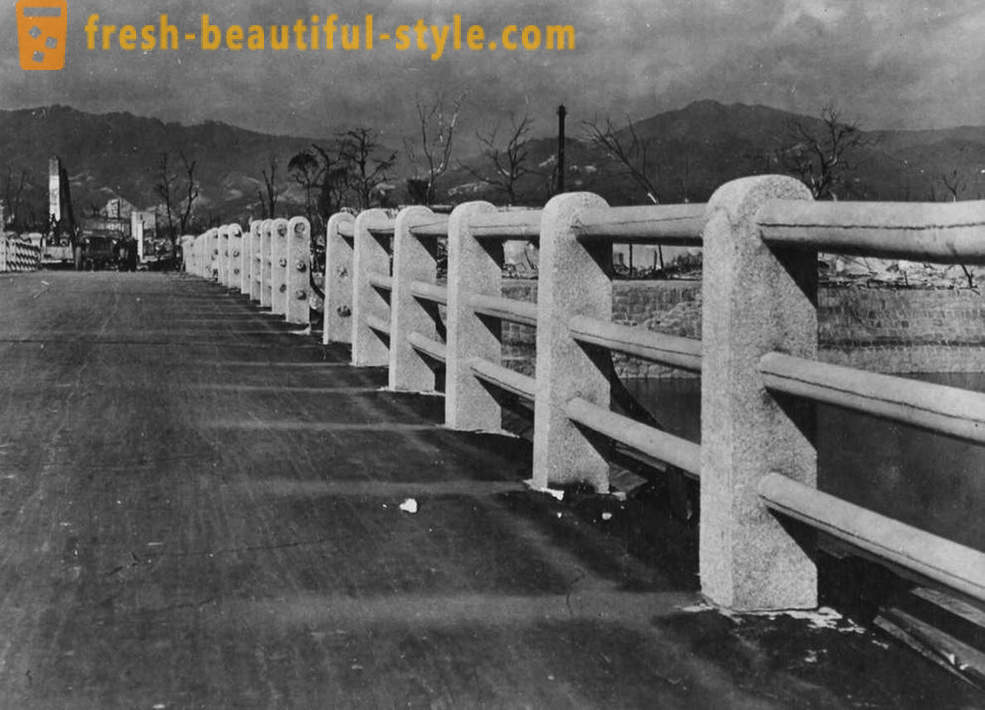
The Bridge on the River Ota 880 meters from the hypocenter of the explosion over Hiroshima. Notice how the road was burned and the left can be seen the ghostly imprints where once protected the surface of concrete columns. (U.S. National Archives)
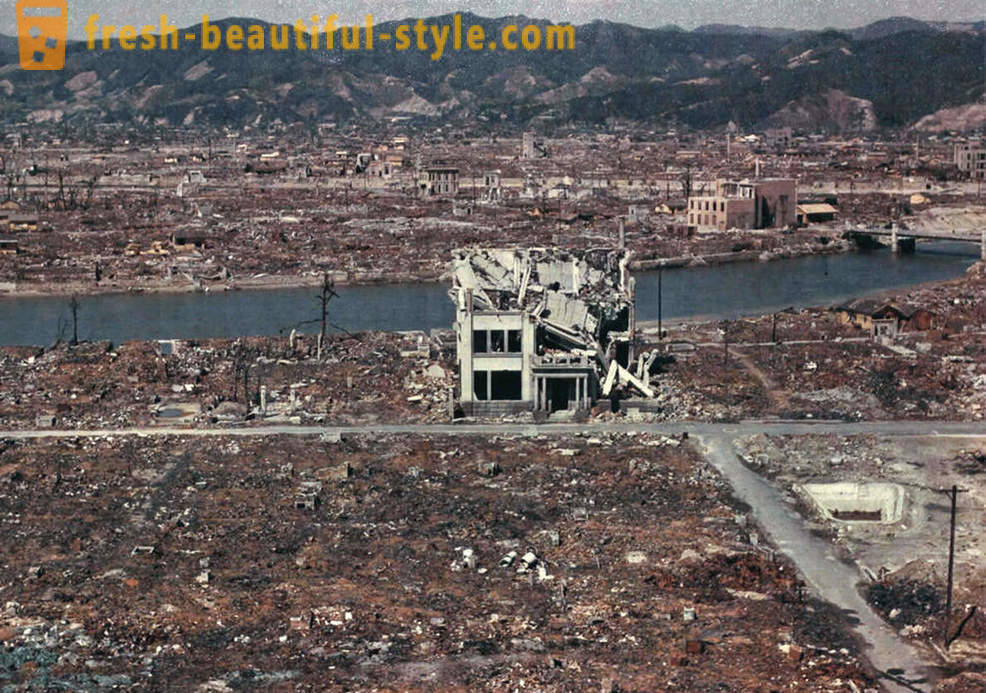
Color photo destroyed Hiroshima in March 1946. (U.S. National Archives)

The explosion destroyed Okita plant in Hiroshima, Japan. November 7, 1945. (U.S. National Archives)

A ruined street in Hiroshima. Take a look, as he was raised pavement and bridge protrudes from the downspout. Scientists say that this happens because of the vacuum created by the pressure of an atomic explosion. (U.S. National Archives)
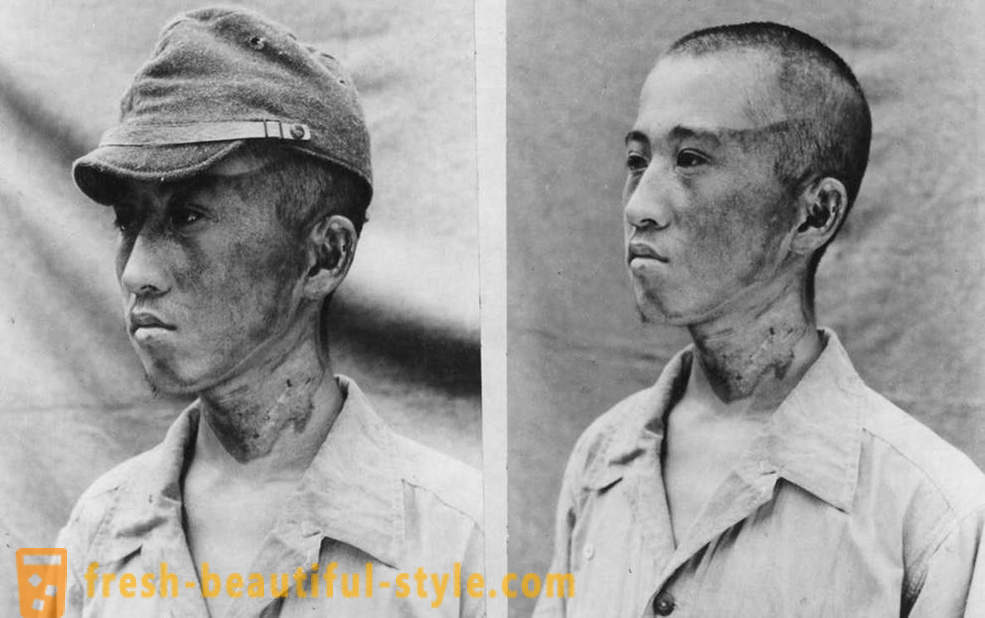
This patient (the picture was taken by the Japanese military October 3, 1945) was about 1981 m 2 from the epicenter when the radiation beams overtook him on the left. Cap defended part of the head from burns. (U.S. National Archives)

a densely populated area of Hiroshima weeks after the explosion on the edge of the heavily impacted area (note the bottom of the building, which was razed to the ground). (U.S. National Archives)
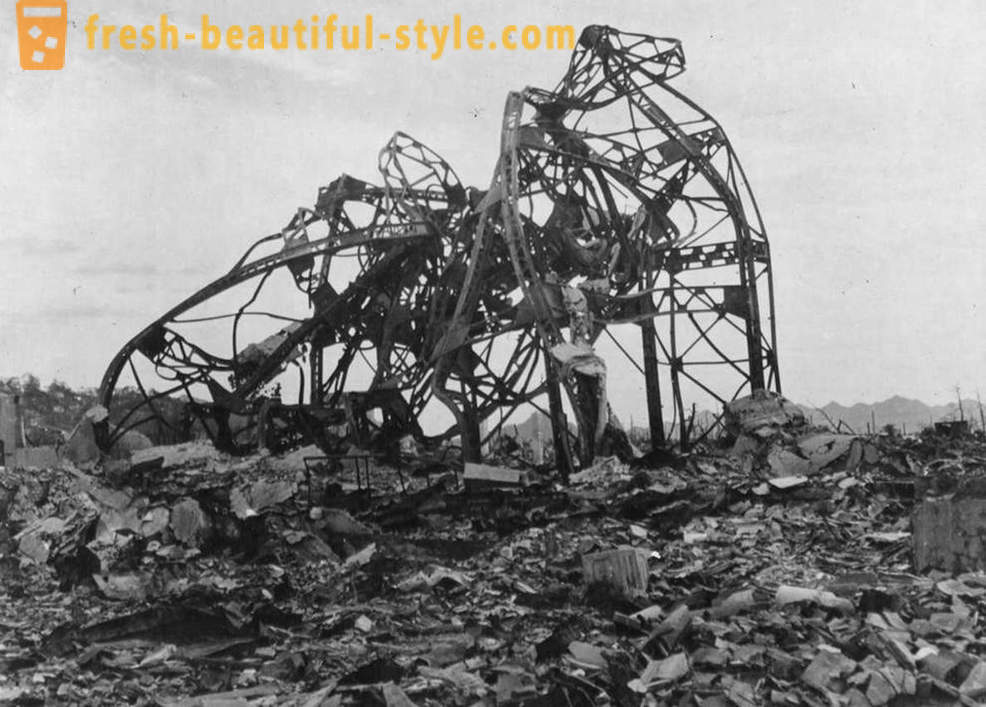
twisted iron beams - all that remains of the theater building, located about 800 meters from the hypocenter. (U.S. National Archives)
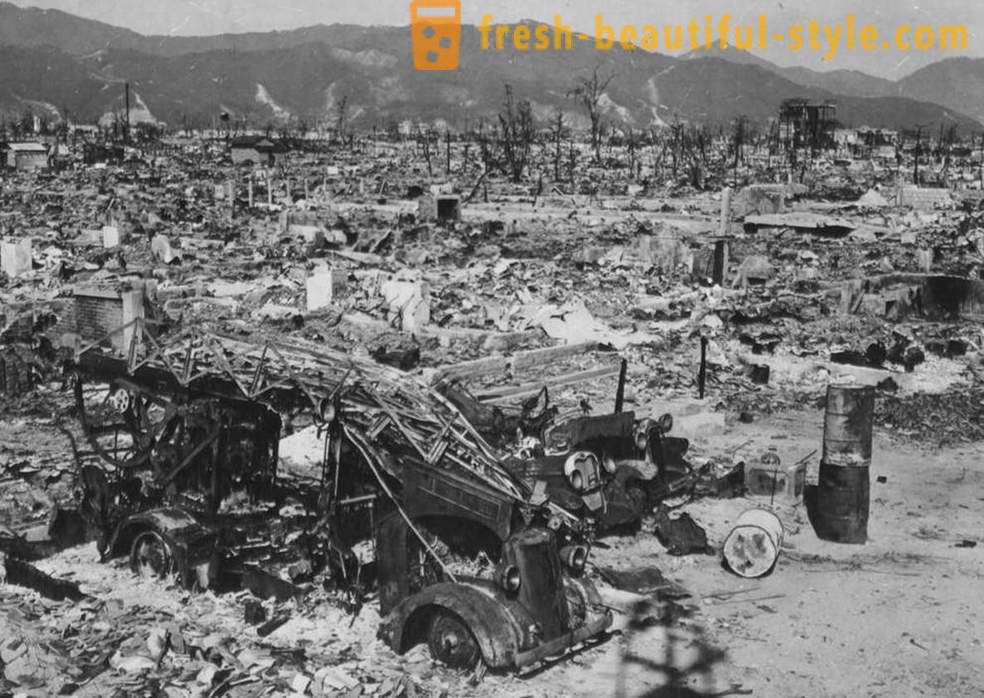
Hiroshima Fire Department lost its only car, when Western station was destroyed by the explosion of an atomic bomb. The station was 1200 meters from the epicenter. (U.S. National Archives)

An aerial view of Hiroshima in the autumn of 1945. In the center of the top of the dome and see the hypocenter of the atomic bomb. (U.S. National Archives)
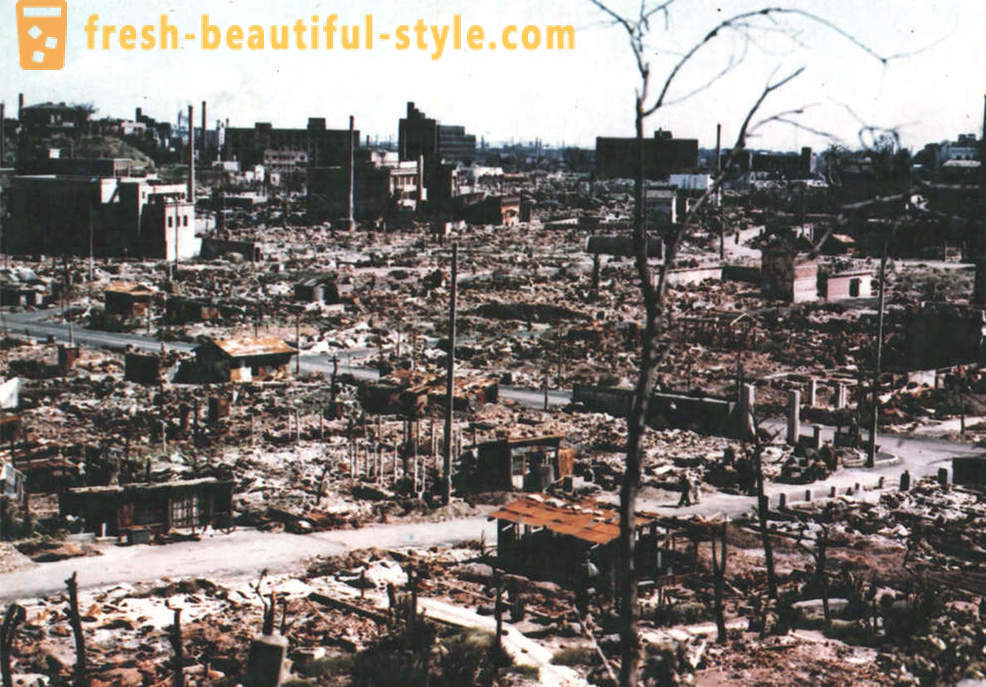
Color photograph of the ruins of Central Hiroshima in autumn 1945. (U.S. National Archives)

"shadow" of the valve handle on the painted wall of the tank with gas after the tragic events in Hiroshima. Radiation heat instantly burned paint where the radiation beams passed unhindered. 1920 m from the hypocenter. (U.S. National Archives)

The sacrifice of the bombing in Hiroshima lies in a temporary hospital located in one of the survivors of the bank buildings in September 1945. (U.S. Department of Navy)
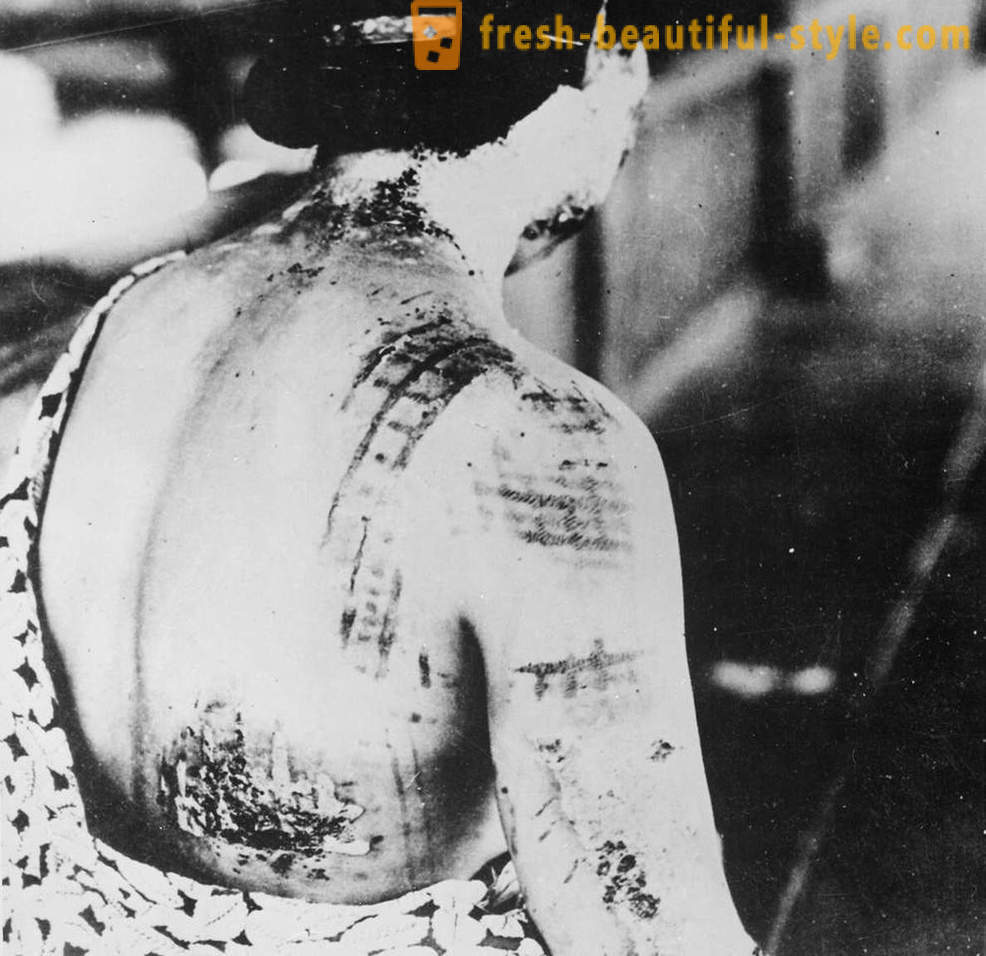
From caption to this photo: "The burns on the skin of the patient remained in the form of dark spots on the kimono, which was on the victim at the time of the explosion." (U.S. National Archives)
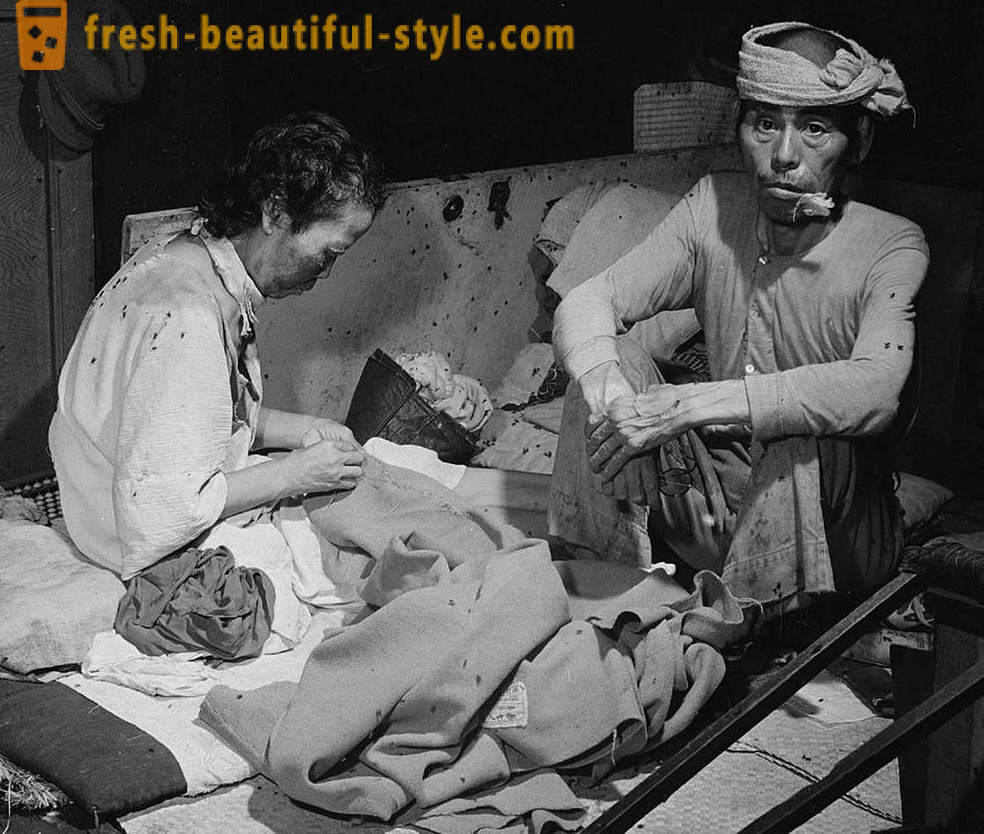
The victims of the explosion in the swarming flies temporary hospital in a bank building in Hiroshima September 15, 1945. (U.S. Department of Navy)
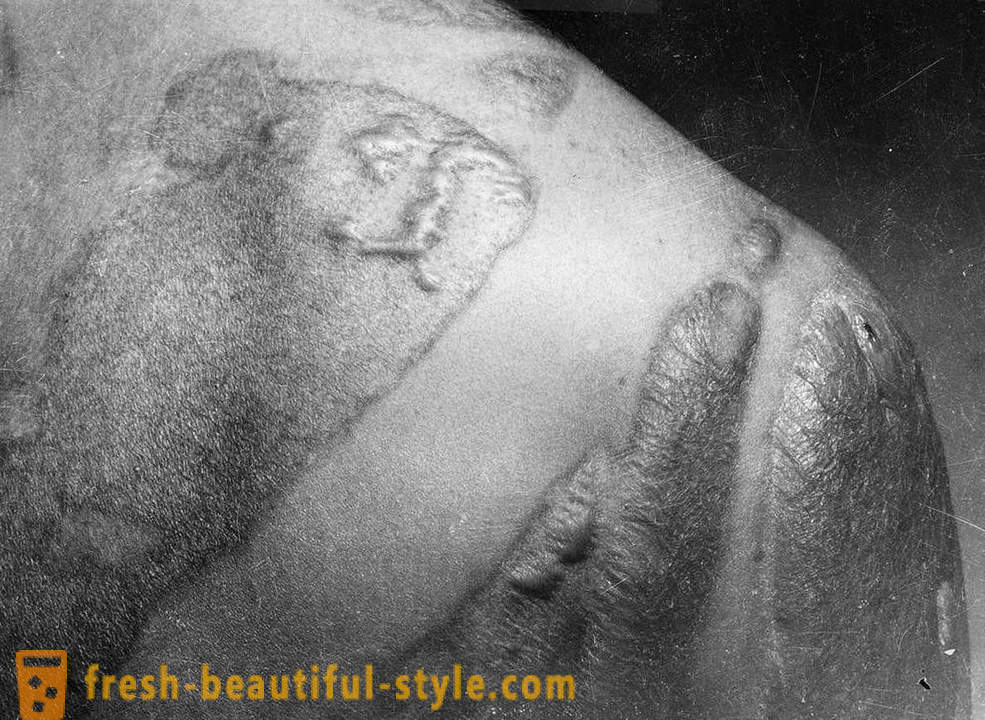
Keloids on the back and shoulders of the victims of the explosion in Hiroshima. Scars formed where the victim's skin was not protected from direct radiation beams. (U.S. National Archives)
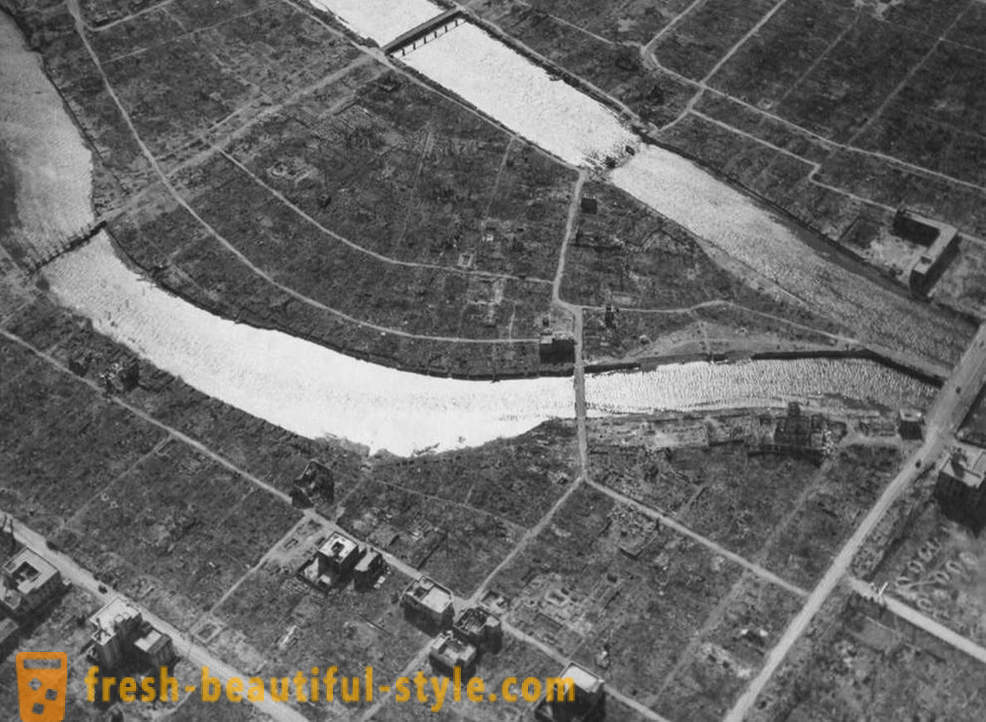
Aerial view of the epicenter and is now famous A-Bomb Dome in Hiroshima, a few weeks after the events of August 6, 1945. (U.S. National Archives)
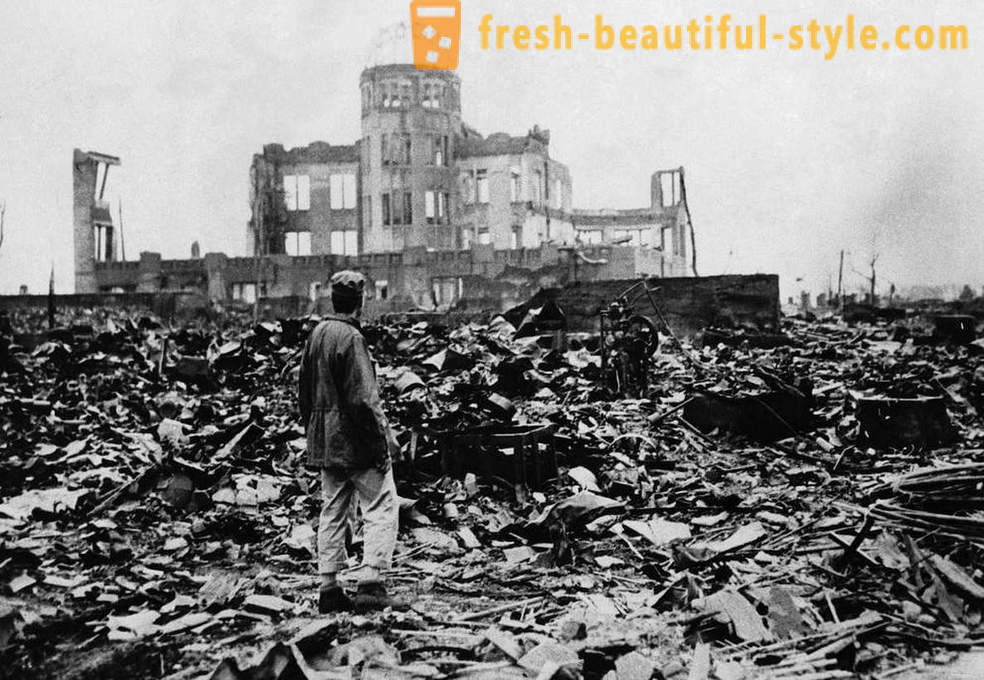
A man looks at the ruins left after the explosion of the atomic bomb in Hiroshima. (AP Photo)

Top view of a ruined industrial area of Hiroshima in autumn 1945. (U.S. National Archives)
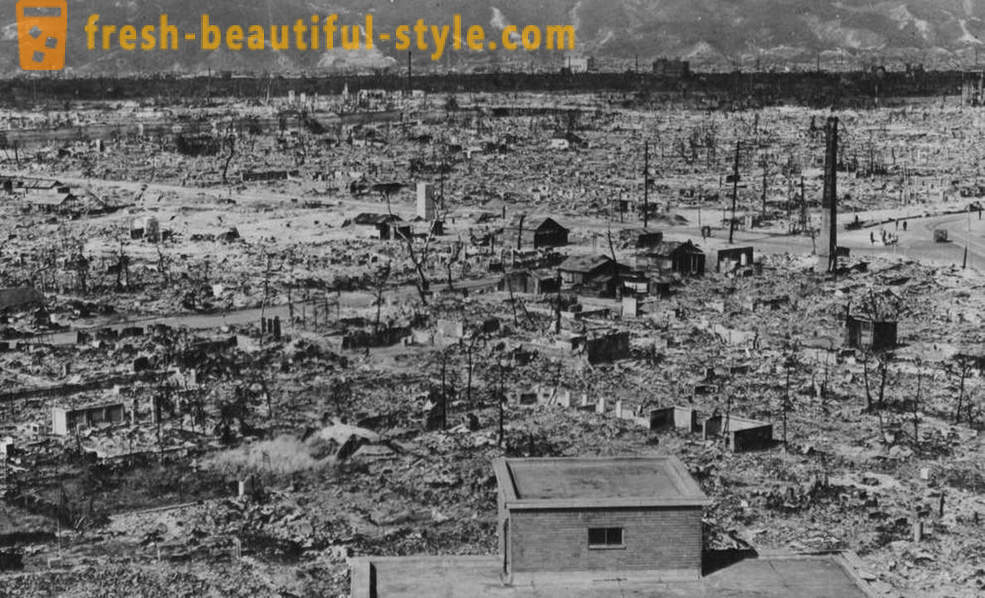
Type of Hiroshima and mountains in the background in the autumn of 1945. The picture was taken from the Red Cross Hospital debris, less than 1, 6 km from the hypocenter. (U.S. National Archives)
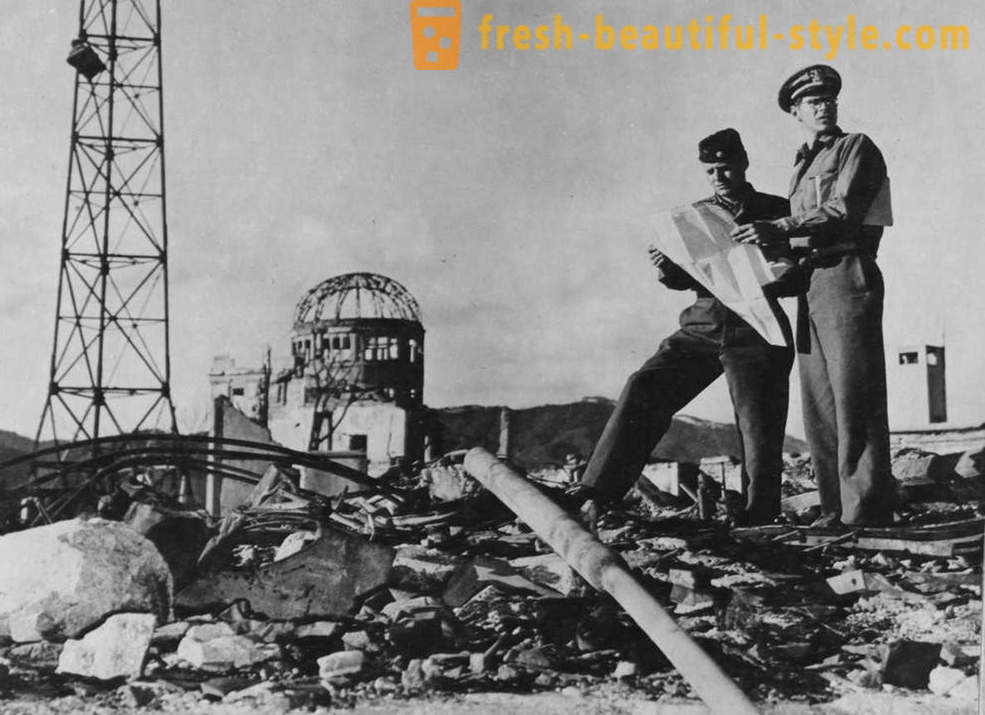
Members of the US Army explore the area around ground zero in Hiroshima in autumn 1945. (U.S. National Archives)
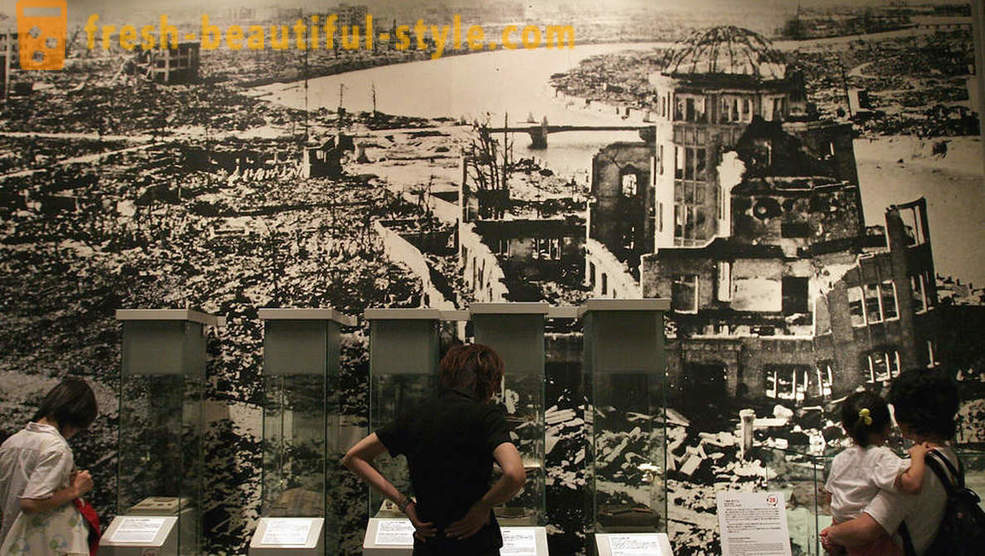
Visitors to the memorial park in Hiroshima look at the panoramic view of the consequences of a nuclear explosion, July 27, 2005. (Photo by Junko Kimura / Getty Images)
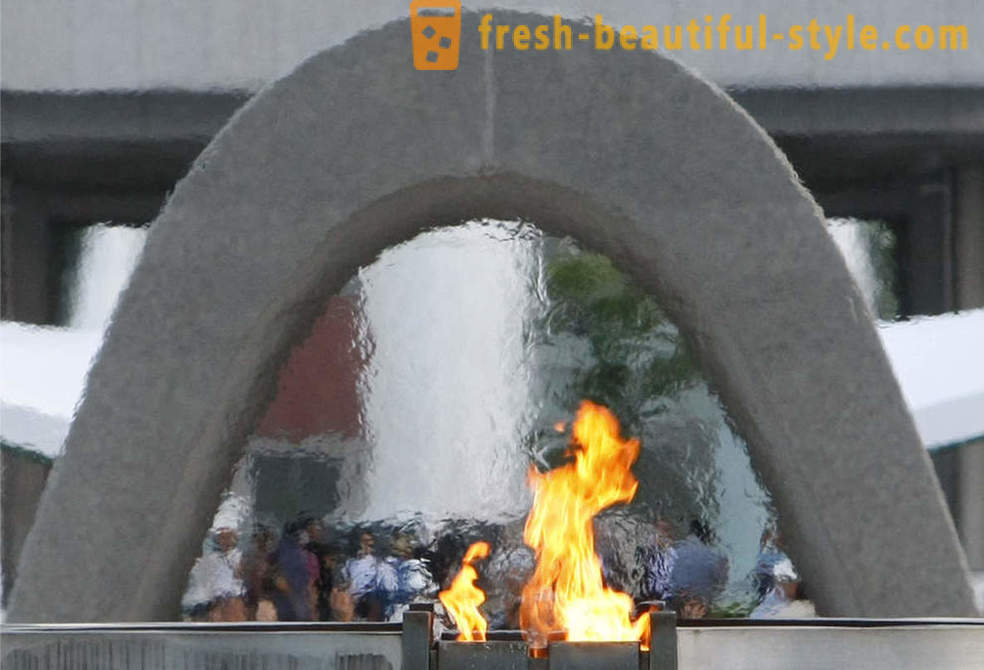
The memorial flame in honor of a nuclear explosion on the monument in the Memorial Park in Hiroshima, western Japan, April 4, 2009, the victims. The fire is burning continuously since its lighting August 1, 1964. The fire will burn until "until all nuclear weapons are not the land will be gone forever." (AP Photo / Shizuo Kambayashi)
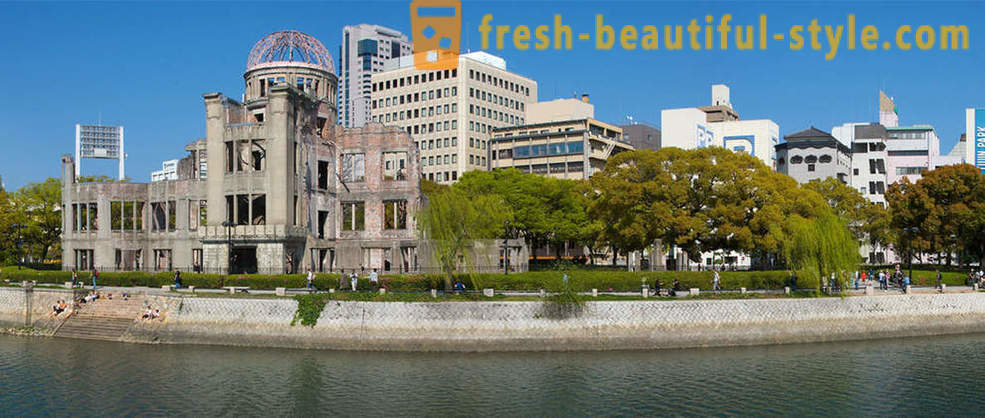
Hiroshima today - details panoramic view of Peace memorial in Hiroshima, April 14, 2008. (Dean S. Pemberton / CC BY-SA)













































